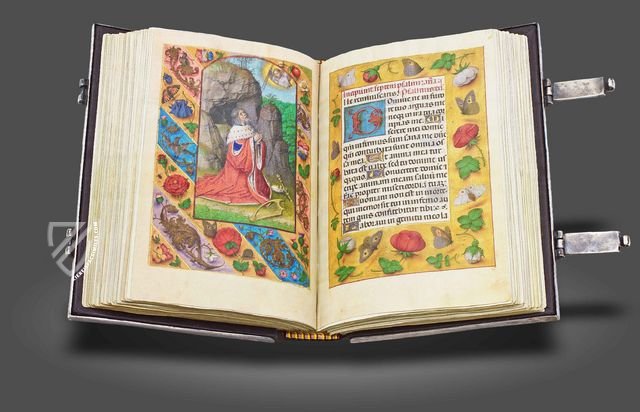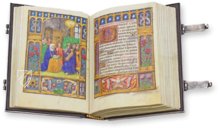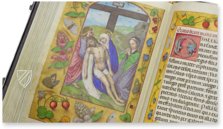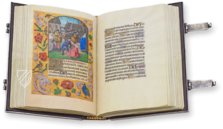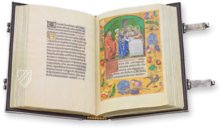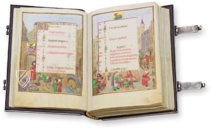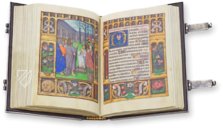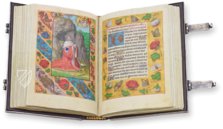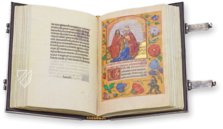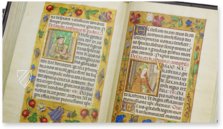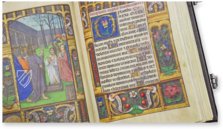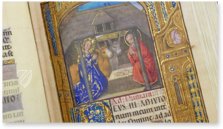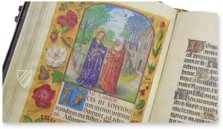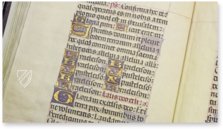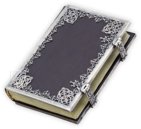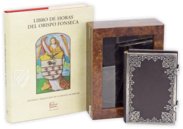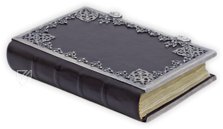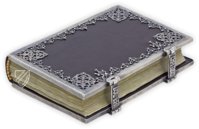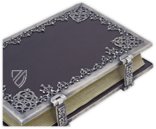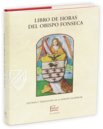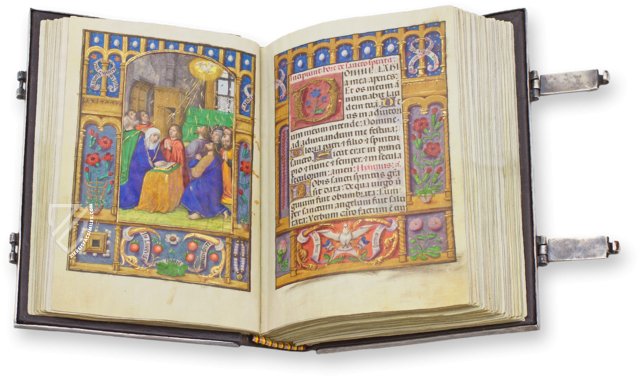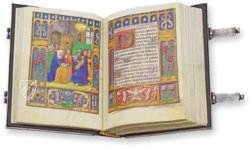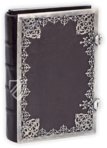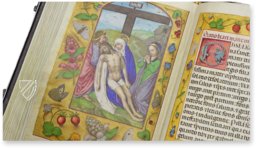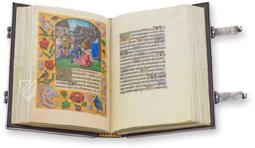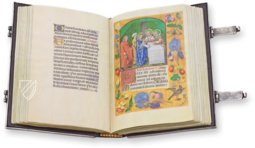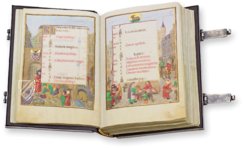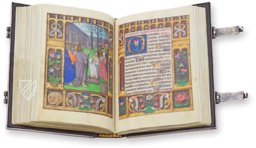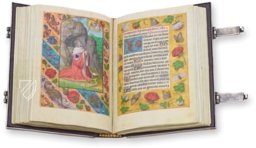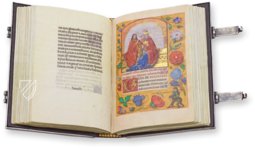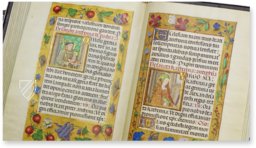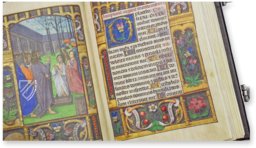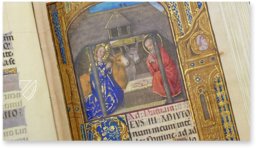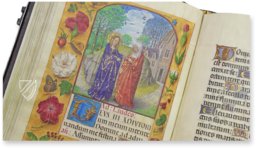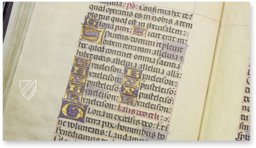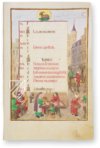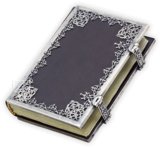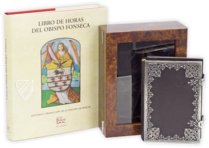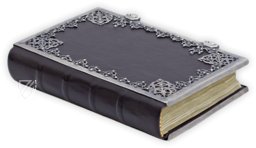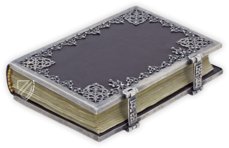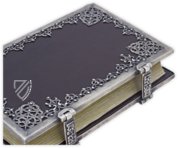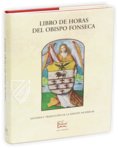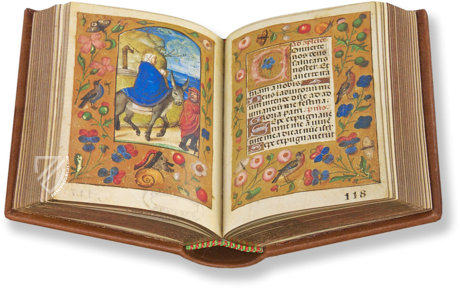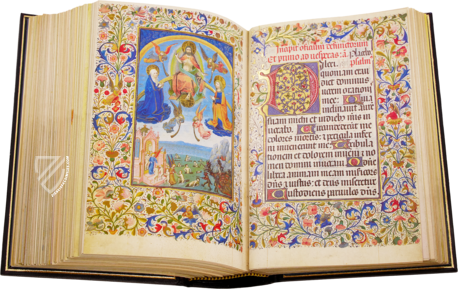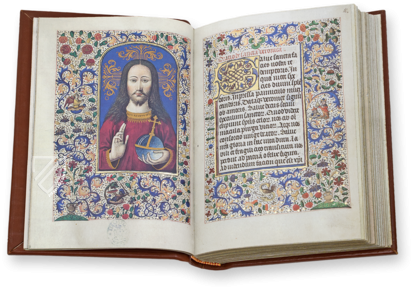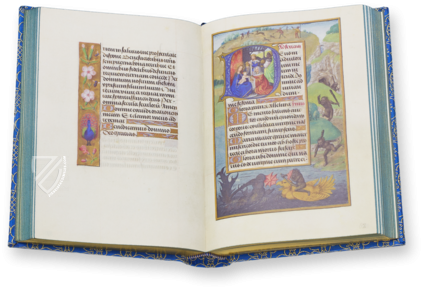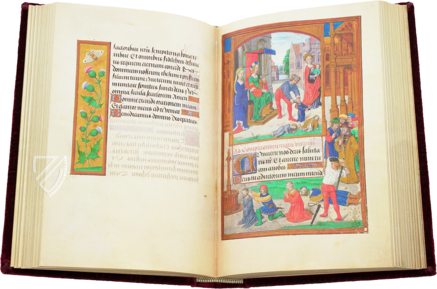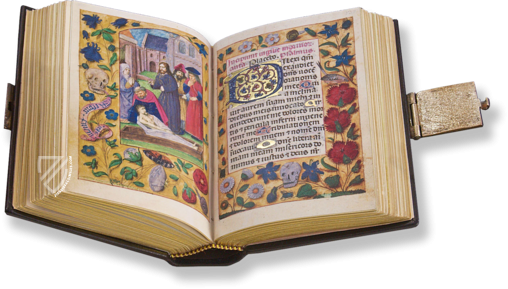Book of Hours of the Bishop Fonseca
(3,000€ - 7,000€)
The Book of Hours of the Bishop Juan Rodriguez Fonseca is counted among the high points of Flemish painting ca. 1500. Although none of the great masters have been able to be clearly identified up to today, the quality of the artistic furnishings is undisputed and recognizable at first glance for every beholder. Magnificent ornamentation, imaginative details, grandiose miniatures, and particularly creative calendar pages make the Book of Hours of the Bishop Fonseca something completely exceptional. Furthermore, the name of the supposed commissioner is closely linked with Spanish history ca. 1500, he was among the most influential and close confidants of the Catholic Kings.
Book of Hours of the Bishop Fonseca
The Book of Hours of the Bishop Juan Rodriguez Fonsecais counted among the high points of Flemish painting ca. 1500. Although none of the great masters have been able to be clearly identified up to today, the quality of the artistic furnishings is undisputed and recognizable at first glance for every beholder. Magnificent ornamentation, imaginative details, grandiose miniatures, and particularly creative calendar pages make the Book of Hours of the Bishop Fonseca something completely exceptional. Furthermore, the name of the supposed commissioner is closely linked with Spanish history ca. 1500, he was among the most influential and close confidants of the Catholic Kings.
A Commissioner with Far-Reaching Influence
Archbishop Juan Rodriguez de Fonseca (1451–1524) belonged to the highest circle of politically influential people under the Catholic King Ferdinand and Queen Isabella. As bishop he held numerous bishop’s sees, including Córdoba and Palencia, before he was named Bishop of Burgos in 1514. Nevertheless, alongside this clerical office, Fonseca frequently undertook important matters of state for the Catholic Queen Isabella I of Castile and King Ferdinand II of Aragon. In this way, he had considerable influence on Spanish history and became an influential and historically significant personality. As such it was almost inevitable that he, like all high-ranking and wealthy people of this time be they burghers, nobles, or kings, commissioned his own magnificent book of hours. This book of hours belonging to Bishop Fonseca is stored today in the Real Seminario de San Carlos Borromeo in Zaragoza and contains true treasures of Flemish illumination.
Particularly High-Quality Painting
Aside from a wonderful calendar, the book of hours brings together 46 full-page miniatures as well as countless smaller miniatures. The pages are covered by broad frames, sometimes with gold background, with adorning flowers and other ornamentation. Numerous heraldic devices of the bishop blanket the book of hours, such as his coat-of-arms. The calendar in particular is illustrated with wonderful full-page miniatures, such as a grape harvest in September or with a bathing scene in June. To be sure, these are everyday scenes as are found in many miniatures from books of hours. Yet here the artists appears to display a special creativity. For example, on one page he staged an entertaining rabbit hunt. The white animals are located in a green landscape within a round fence. Nevertheless, one of the rabbits has escaped and is hunted across a field by a white dog. Entertaining scenes such as this account for the particular charm of the Book of Hours of the Bishop Fonseca.
The Riddle of the Masters of the Miniatures
The Book of Hours of the Bishop Fonseca probably originated ca. 1500. The paintings clearly indicate the style of the Flemish school, its genesis was probably in Ghent or Bruges. Associated with the Flemish style of illumination were such significant names as the Master of the Maria of Burgundy. Indeed, the name of the artist for the Book of Hours of the Bishop Fonseca is still not known today. It is undisputed that the miniatures and the entire artistic furnishings of the book of hours are among the best of what Flemish illumination produced ca. 1500. Currently, the so-called Master of the Book of Hours of 1500 is considered to be the leading artist of the book of hours. Yet, it is not to be ruled out that future research in art history may identify a particularly big name as the master of the miniatures such as Hans Memling, Huga van der Goes, or Gerard David. Such a definitive ascription would finally suit the artistic tier of this object.
Codicology
- Alternative Titles
- Libro de Horas del Obispo Fonseca
Stundenbuch des Bischofs Fonseca
Hours of Bishop Fonseca - Size / Format
- 406 pages / 18.5 × 12.5 cm
- Origin
- Belgium
- Date
- Ca. 1500
- Epochs
- Style
- Genre
- Language
- Illustrations
- 46 full-page miniatures, plus over 22 large-sized, complete borders enclosing a text with another small miniature
- Artist / School
- Master of the Prayer Books of 1500
- Previous Owners
- Archbishop Juan Rodríguez de Fonseca (1451-1524)
Antonio Fonseca
Book of Hours of the Bishop Fonseca
December: Meat Market
Calendar pages typically have medallions or marginal miniatures containing labors of the month, which usually depict animals being slaughtered for the month of December. The onset of winter meant the loss of both animal feed as well as cold temperatures enabling refrigeration, and thus December was an ideal time for slaughtering, salting, and curing meat in preparation for winter. This scene shows butchers selling cuts of meat to customers, all of whom are richly dressed in bright garments.
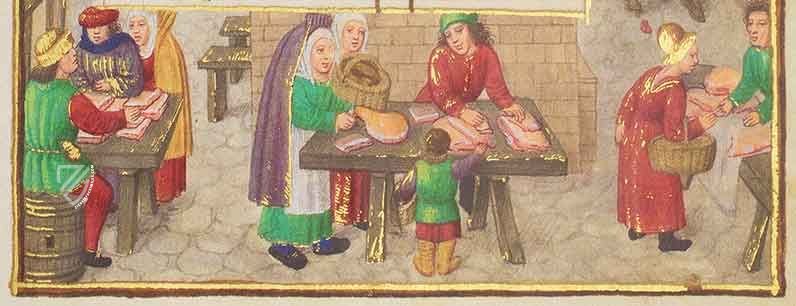
Book of Hours of the Bishop Fonseca
Adoration of the Magi
This is a superb example of Flemish illumination ca. 1500. The glimmering golden border is filled with naturalistic depictions of flowers, fruits, insects, and birds. Adorned with three decorative initials, one even illustrated with a shadow, we see the beginning of the relevant text.
Adoration scenes became even more popular than the Nativity itself during this time because of the opportunities the composition presented, this is especially true of the exotic Magi. They are not only depicted in various styles of dress, which are subtly accented with gold pen strokes, but have distinctly different ethnic features that are depicted accurately. The background consists of a splendidly dilapidated architecture, a nod to the humble lodgings.
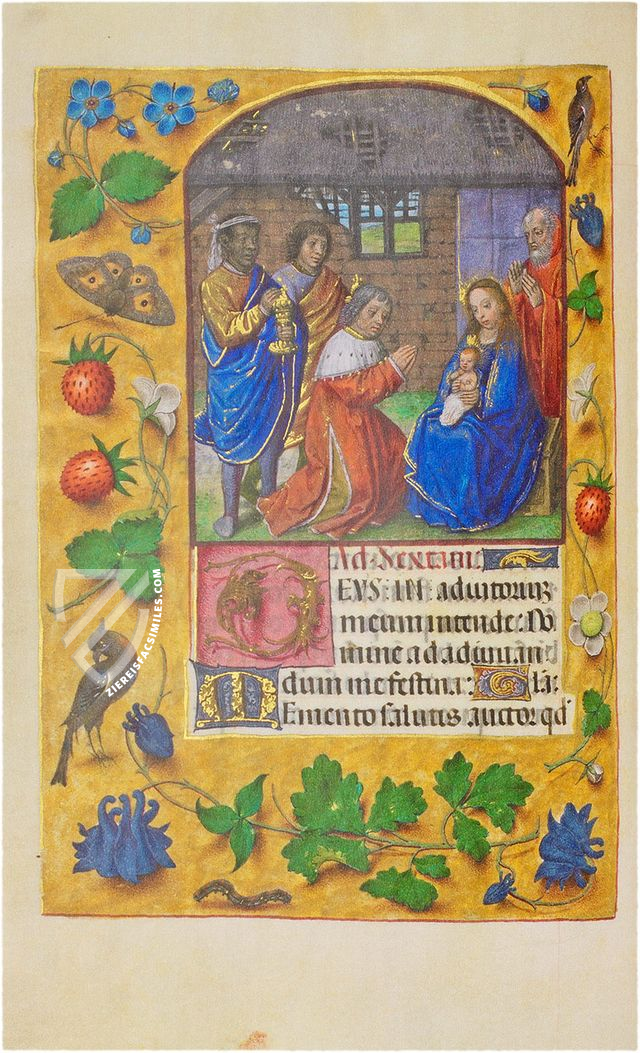
#1 Libro de Horas del Obispo Fonseca
Language: Spanish
(3,000€ - 7,000€)
- Treatises / Secular Books
- Apocalypses / Beatus
- Astronomy / Astrology
- Bestiaries
- Bibles / Gospels
- Chronicles / History / Law
- Geography / Maps
- Saints' Lives
- Islam / Oriental
- Judaism / Hebrew
- Single Leaf Collections
- Leonardo da Vinci
- Literature / Poetry
- Liturgical Manuscripts
- Medicine / Botany / Alchemy
- Music
- Mythology / Prophecies
- Psalters
- Other Religious Books
- Games / Hunting
- Private Devotion Books
- Other Genres
- Afghanistan
- Armenia
- Austria
- Belgium
- Belize
- Bosnia and Herzegovina
- China
- Colombia
- Costa Rica
- Croatia
- Cyprus
- Czech Republic
- Denmark
- Egypt
- El Salvador
- Ethiopia
- France
- Germany
- Greece
- Guatemala
- Honduras
- Hungary
- India
- Iran
- Iraq
- Israel
- Italy
- Japan
- Jordan
- Kazakhstan
- Kyrgyzstan
- Lebanon
- Liechtenstein
- Luxembourg
- Mexico
- Morocco
- Netherlands
- Palestine
- Panama
- Peru
- Poland
- Portugal
- Romania
- Russia
- Serbia
- Spain
- Sri Lanka
- Sweden
- Switzerland
- Syria
- Tajikistan
- Turkey
- Turkmenistan
- Ukraine
- United Kingdom
- United States
- Uzbekistan
- Vatican City
- A. Oosthoek, van Holkema & Warendorf
- Aboca Museum
- Ajuntament de Valencia
- Akademie Verlag
- Akademische Druck- u. Verlagsanstalt (ADEVA)
- Aldo Ausilio Editore - Bottega d’Erasmo
- Alecto Historical Editions
- Alkuin Verlag
- Almqvist & Wiksell
- Amilcare Pizzi
- Andreas & Andreas Verlagsbuchhandlung
- Archa 90
- Archiv Verlag
- Archivi Edizioni
- Arnold Verlag
- ARS
- Ars Magna
- ArtCodex
- AyN Ediciones
- Azimuth Editions
- Badenia Verlag
- Bärenreiter-Verlag
- Belser Verlag
- Belser Verlag / WK Wertkontor
- Benziger Verlag
- Bernardinum Wydawnictwo
- BiblioGemma
- Biblioteca Apostolica Vaticana (Vaticanstadt, Vaticanstadt)
- Bibliotheca Palatina Faksimile Verlag
- Bibliotheca Rara
- Boydell & Brewer
- Bramante Edizioni
- Bredius Genootschap
- Brepols Publishers
- British Library
- C. Weckesser
- Caixa Catalunya
- Canesi
- CAPSA, Ars Scriptoria
- Caratzas Brothers, Publishers
- Carus Verlag
- Casamassima Libri
- Centrum Cartographie Verlag GmbH
- Chavane Verlag
- Christian Brandstätter Verlag
- Circulo Cientifico
- Club Bibliófilo Versol
- Club du Livre
- CM Editores
- Collegium Graphicum
- Collezione Apocrifa Da Vinci
- Comissão Nacional para as Comemorações dos Descobrimentos Portugueses
- Coron Verlag
- Corvina
- CTHS
- D. S. Brewer
- Damon
- De Agostini/UTET
- De Nederlandsche Boekhandel
- De Schutter
- Deuschle & Stemmle
- Deutscher Verlag für Kunstwissenschaft
- DIAMM
- Droz
- E. Schreiber Graphische Kunstanstalten
- Ediciones Boreal
- Ediciones Grial
- Ediclube
- Edições Inapa
- Edilan
- Editalia
- Edition Deuschle
- Edition Georg Popp
- Edition Leipzig
- Edition Libri Illustri
- Editiones Reales Sitios S. L.
- Éditions de l'Oiseau Lyre
- Editions Medicina Rara
- Editorial Casariego
- Editorial Mintzoa
- Editrice Antenore
- Editrice Velar
- Edizioni Edison
- Egeria, S.L.
- Eikon Editores
- Electa
- Emery Walker Limited
- Enciclopèdia Catalana
- Eos-Verlag
- Ephesus Publishing
- Ernst Battenberg
- Eugrammia Press
- Extraordinary Editions
- Fackelverlag
- Facsimila Art & Edition
- Facsimile Editions Ltd.
- Facsimilia Art & Edition Ebert KG
- Faksimile Verlag
- Feuermann Verlag
- Folger Shakespeare Library
- Franco Cosimo Panini Editore
- Friedrich Wittig Verlag
- Fundación Hullera Vasco-Leonesa
- G. Braziller
- Gabriele Mazzotta Editore
- Gebr. Mann Verlag
- Gesellschaft für graphische Industrie
- Getty Research Institute
- Giovanni Domenico de Rossi
- Giunti Editore
- Graffiti
- Grafica European Center of Fine Arts
- Guido Pressler
- Guillermo Blazquez
- Gustav Kiepenheuer
- H. N. Abrams
- Harrassowitz
- Harvard University Press
- Helikon
- Hendrickson Publishers
- Henning Oppermann
- Herder Verlag
- Hes & De Graaf Publishers
- Hoepli
- Holbein-Verlag
- Houghton Library
- Hugo Schmidt Verlag
- Idion Verlag
- Il Bulino, edizioni d'arte
- ILte
- Imago
- Insel Verlag
- Insel-Verlag Anton Kippenberger
- Instituto de Estudios Altoaragoneses
- Instituto Nacional de Antropología e Historia
- Introligatornia Budnik Jerzy
- Istituto dell'Enciclopedia Italiana - Treccani
- Istituto Ellenico di Studi Bizantini e Postbizantini
- Istituto Geografico De Agostini
- Istituto Poligrafico e Zecca dello Stato
- Italarte Art Establishments
- Jan Thorbecke Verlag
- Johnson Reprint Corporation
- Josef Stocker
- Josef Stocker-Schmid
- Jugoslavija
- Karl W. Hiersemann
- Kasper Straube
- Kaydeda Ediciones
- Kindler Verlag / Coron Verlag
- Kodansha International Ltd.
- Konrad Kölbl Verlag
- Kurt Wolff Verlag
- La Liberia dello Stato
- La Linea Editrice
- La Meta Editore
- Lambert Schneider
- Landeskreditbank Baden-Württemberg
- Leo S. Olschki
- Les Incunables
- Liber Artis
- Library of Congress
- Libreria Musicale Italiana
- Lichtdruck
- Lito Immagine Editore
- Lumen Artis
- Lund Humphries
- M. Moleiro Editor
- Maison des Sciences de l'homme et de la société de Poitiers
- Manuscriptum
- Martinus Nijhoff
- Maruzen-Yushodo Co. Ltd.
- MASA
- Massada Publishers
- McGraw-Hill
- Metropolitan Museum of Art
- Militos
- Millennium Liber
- Müller & Schindler
- Nahar - Stavit
- Nahar and Steimatzky
- National Library of Wales
- Neri Pozza
- Nova Charta
- Oceanum Verlag
- Odeon
- Orbis Mediaevalis
- Orbis Pictus
- Österreichische Staatsdruckerei
- Oxford University Press
- Pageant Books
- Parzellers Buchverlag
- Patrimonio Ediciones
- Pattloch Verlag
- PIAF
- Pieper Verlag
- Plon-Nourrit et cie
- Poligrafiche Bolis
- Presses Universitaires de Strasbourg
- Prestel Verlag
- Princeton University Press
- Prisma Verlag
- Priuli & Verlucca, editori
- Pro Sport Verlag
- Propyläen Verlag
- Pytheas Books
- Quaternio Verlag Luzern
- Reales Sitios
- Recht-Verlag
- Reichert Verlag
- Reichsdruckerei
- Reprint Verlag
- Riehn & Reusch
- Roberto Vattori Editore
- Rosenkilde and Bagger
- Roxburghe Club
- Salerno Editrice
- Saltellus Press
- Sandoz
- Sarajevo Svjetlost
- Schöck ArtPrint Kft.
- Schulsinger Brothers
- Scolar Press
- Scrinium
- Scripta Maneant
- Scriptorium
- Shazar
- Siloé, arte y bibliofilia
- SISMEL - Edizioni del Galluzzo
- Sociedad Mexicana de Antropología
- Société des Bibliophiles & Iconophiles de Belgique
- Soncin Publishing
- Sorli Ediciones
- Stainer and Bell
- Studer
- Styria Verlag
- Sumptibus Pragopress
- Szegedi Tudomànyegyetem
- Taberna Libraria
- Tarshish Books
- Taschen
- Tempus Libri
- Testimonio Compañía Editorial
- Thames and Hudson
- The Clear Vue Publishing Partnership Limited
- The Facsimile Codex
- The Folio Society
- The Marquess of Normanby
- The Richard III and Yorkist History Trust
- Tip.Le.Co
- TouchArt
- TREC Publishing House
- TRI Publishing Co.
- Trident Editore
- Tuliba Collection
- Typis Regiae Officinae Polygraphicae
- Union Verlag Berlin
- Universidad de Granada
- University of California Press
- University of Chicago Press
- Urs Graf
- Vallecchi
- Van Wijnen
- VCH, Acta Humaniora
- VDI Verlag
- VEB Deutscher Verlag für Musik
- Verlag Anton Pustet / Andreas Verlag
- Verlag Bibliophile Drucke Josef Stocker
- Verlag der Münchner Drucke
- Verlag für Regionalgeschichte
- Verlag Styria
- Vicent Garcia Editores
- W. Turnowski Ltd.
- W. Turnowsky
- Waanders Printers
- Wiener Mechitharisten-Congregation (Wien, Österreich)
- Wissenschaftliche Buchgesellschaft
- Wissenschaftliche Verlagsgesellschaft
- Wydawnictwo Dolnoslaskie
- Xuntanza Editorial
- Zakład Narodowy
- Zollikofer AG

